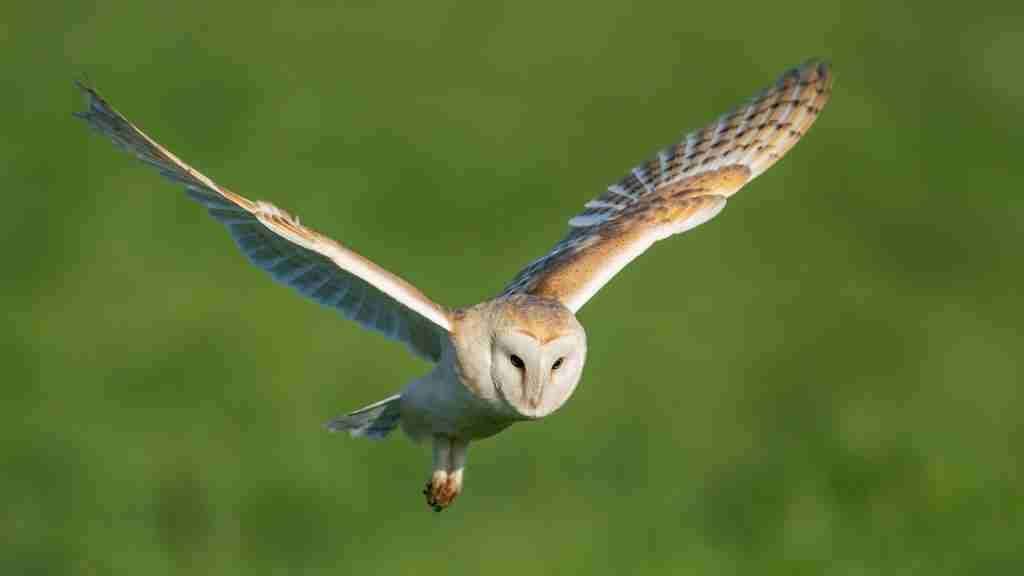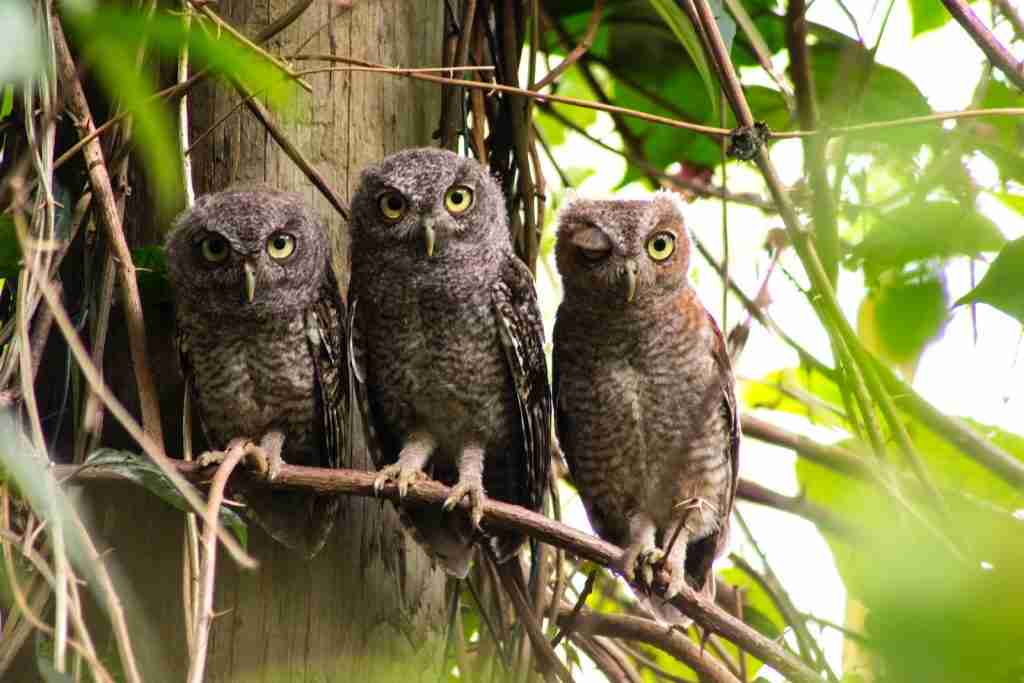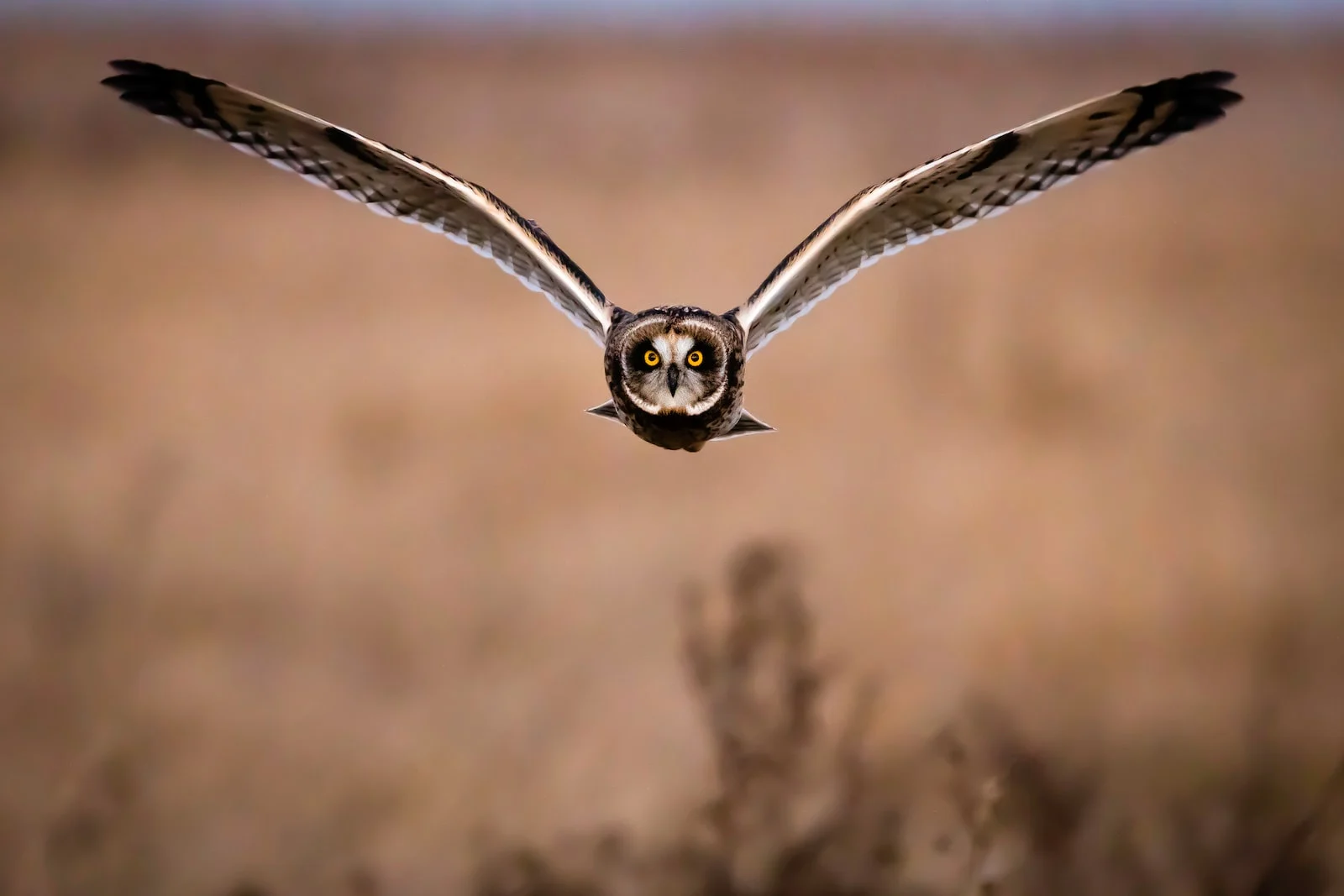17 Fun Facts About Owls You Didn’t Know
1. Owls Have a Unique Facial Look.
Owls have flat faces and big eyes. Their big eyes are perfect for seeing at night which works well for them because remember owls are mostly active at night.
Not only do their eyes help them to see well at night but also help them see far-away objects. A large retina could be observed in the owl’s eye.
2. Most Owls Have Piercing Yellow Eyes.
These eyes have telescopic vision like humans, meaning they can see detail at far distances. This makes up for the owl’s poor color vision. Owls are also far-sighted meaning that they cannot see objects close to their eyes.
Their eyes are better at detecting movement at far distances.
3. Owls’ Greatest Strength is their hearing, not their eyesight.
The shape of their head is responsible for their outstanding listening ability. Their ear openings are on each side of their head and are asymmetrical, meaning they are uneven and not aligned with one another.
The asymmetry of the owl’s ear opening allows the owl to know exactly where a sound comes from. This is because the soundwave will hit one ear before the other.
4. Owls can turn their head 270 degrees.
Another surprising and helpful quality of owls is that they can turn their heads way further than a human can.
Due to their flexible and long necks, owls can turn their heads to see what is going on behind them, and with their super-powerful eyes, they could see if they have found prey.
5. The beak of the owl helps to eat and tear its prey.
The beak of an owl is short, curved, and downward-facing. Usually, at the tip, the upper beak is hooked.
Having a small beak helps the owl to have an excellent hearing because it doesn’t block any sound waves from reaching the owl’s ears.
6. The color of the owl’s feather acts as camouflage.
The color of the feathers allows the owl to blend with their surroundings. This is perfect for their hunting technique of hiding and quietly waiting for their dinner to come near them.
Owls’ coloration tends to match their environment. For instance, the snowy owl is all white allowing it to blend in with the snow.

Feather Coloration for Camouflage
7. Owls are carnivores.
As cute as they are, owls are predators. Remember predators are animals that hunt other animals. Owls love to hunt, they hunt and eat small mammals, reptiles, amphibians, birds, fish, and insects.
8. The features of the owl that make it a perfect predator.
Now check this out, their beaks are sharp and so are their talons. Moreover, their wings are super quiet while they are flying. They are like quiet, silent, and sneaky flyers.
These qualities make owls great hunters, and they must remain very cautious if they wish to survive.
9. Exploring the Global Reach of Owls and Their Presence Across the World.
Another question for you. So where in the world one can find an owl? It’s an interesting question. This might surprise you, but owls live all over the world except for a few islands and the polar ice caps.
They can live in many different habitats even in extreme temperatures.
10. Owls like to stay in one place.
Owls do not migrate to warmer climates. They just stay right where they are. They remain in the same place across the whole year. they are tough birds and are not inclined of moving to different areas.
They like to live in a comfort zone where they can easily prey and are aware of their habitat.
11. Sounds allow the owl to communicate.
We are here to give information about owls, and Facts About Owls for Kids cannot be complete without talking about the signature sound of owls. Owls often make a loud hoot sound.
Not every owl hoots but these birds can make other sounds like whistles, chirps, screeches, and more. Different sounds mean different things e-g hoot is used to claim a territory.
12. Discovering the Diversity of Owls and 250 Species They Belong to.
The owl species can be broken down into two families. The families are Tytonidae commonly known as Barn Owl and Strigidae, which are commonly referred to as true or typical owls. Most owls are true owls. The Barn-owl family has only 20 species.
13. The features of Barn-owl.
Barn owls can be differentiated by their long heart-shaped faces. They also have small eyes and long legs. Compared to real owls, their plumage is light and lacking in prominent patterns.
14. The predating style of the owl is unique.
The claws of owls are used to catch and kill the prey. Most of the time the owls hide quietly and wait for their potential prey.
When the prey comes within the range, they fly quietly and swiftly.
Before the prey can notice the presence of the owl it is already too late.
15. Most owls are nocturnal, but some are diurnal.
Diurnal means to remain active in the daytime. Although it is well-known fact that most species of owl are nocturnal there are some diurnal species. Moreover, there are crepuscular owls.
Crepuscular species are kind of species that are active at dawn and dusk.
16. Diurnal owls have different hunting tactics than that nocturnal owls.

Diurnal owls have different hunting tactics than that nocturnal owls, who hide and wait for their prey. Diurnal owls are active hunters. They quietly hunt for prey by flying slowly and low to the ground during the day.
They swoop down and seize their prey as soon as they detect it.
17. The mating season of owls.
The owls get ready for mating after the male owl finds a territory and sings to gain the attention of a female.
If a female thinks the male’s territory is a good place to raise their babies, she will join the male owl. During their breeding, the pair of owls sing, to let the other owls know that they are mating and don’t need a partner.
18. The male owl is responsible for food and the female owl provides security to newly hatched chicks.
The female owl stays at the nest after she lays the eggs to guard the eggs and chicks. the male owl will go hunting and bring food back to the nest.
Eventually, the young chicks grow, and the male cannot feed them alone, so his partner joins him in the hunt.
19. Separating Myth from Reality and the Symbolism Surrounding Them.
The symbols and mythology associated with owls are numerous. For instance, owls are revered in Western cultures as knowledgeable animals.
This goes back to the time of Ancient Greece when the owl was the emblem of Athena, the goddess of wisdom.
20. Owls spend many years in one nest.
Owls are extremely devoted to their nests and frequently utilize the same nest for several years. They can be fiercely protective of their territory and hostile against intruders. So if you come upon an owl nest, take a fair look at it.
FAQS
Owls are carnivores, and they primarily eat small animals, such as rodents, insects, fish, and other birds. The exact diet of an owl depends on the species and the availability of prey in its habitat. Some larger species of owls, such as the eagle owl, can even hunt larger prey like foxes and hares.
The scientific name for the common barn owl is Tyto alba, and there are various scientific names for the over 250 species of owls.
Owls are considered to be highly intelligent birds. They are capable of making their own decisions and possess a high level of problem-solving skills.
There are over 250 species of owls found all around the world.
Owls have extraordinarily good vision and can see prey as far away as 300 yards. They are also able to see in low-light conditions and can spot a human from up to 50 yards away. This is because their eyes are particularly large and have a high concentration of rods, which allows them to see well in the dark.
Owls can live in a variety of places all around the world, including forests, deserts, grasslands, tundras, and even cities!
Owls have flat faces because their eyes are fixed in their sockets, which means they cannot move their eyes to look around like humans can. Instead, owls have to turn their entire head to see in different directions. The flat facial disc helps to funnel sound to their ears, which are located on the sides of their head, allowing them to hear prey even when it’s out of sight.







